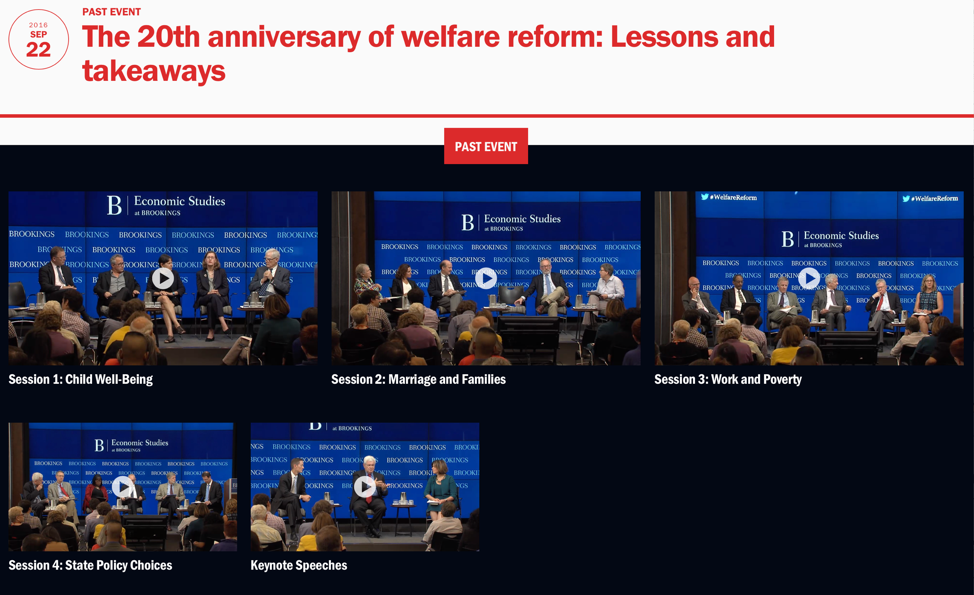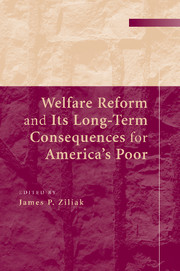At least in Florida, we find that local discretion has increased in importance under TANF. We find significant variation in local practices and strong evidence that these differences are tied to local political values. We also find that social class variables are important in determing sanction outcomes. Individuals with lower levels of human capital are more likely to be sanctioned. Our analysis also underscores the potential importance of using a longitudinal design to study sanctioning outcomes. This conclusion is supported by at least two important aspects of our findings -- the existence of a seasonal pattern to sanctioning, and the relationship between race and sanctioning. Holding other variables constant, the overall rate of sanctioning in Florida is higher during the peak tourist season than it is during the summer monthssuggesting that studies conducted in short time frames may reach conclusions that cannot be reliably generalized to rest of the year. Ethnic differences in sanctioning are also related to the length of time on TANF. Thus, sanctioning disparity may be a more complex phenomenon than we have thus far understood and is therefore best studied using a longitudinal design.
Welfare Reform and Transfer Programs
Since its inception in 2002, UKCPR has contributed fundamental research on the consequences of the 1996 welfare reform. The Personal Responsibility and Work Opportunity Reconciliation Act (PRWORA) ended the cash entitlement of the Aid to Families with Dependent Children (AFDC) program and replaced it with the block grant-funded Temporary Assistance for Needy Families (TANF). The new program made assistance contingent on work activity and time limited, restricted Supplemental Security Income (SSI) for children and noncitizens and food stamps for adults without dependents, enhanced child support enforcement, and permitted government funding of religious organizations to provide social services.
UKCPR marked the 10th and 20th anniversaries of TANF with major research conferences. The first resulted in the 2009 publication of Welfare Reform and its Long-Term Consequences for America's Poor at Cambridge University Press. The second conference was held in 2016 at Brookings Institution. It included a conversation with Newt Gingrich, who was Speaker of the House during welfare reform, and Bruce Reed, who was domestic policy advisor to President Clinton. The session was moderated by Diane W. Schanzenbach of Northwestern University. Along with UKCPR, the event was co-sponsored by the Institute for Research on Poverty, the Stanford Center on Poverty and Inequality, and the University of California-Davis Center for Poverty Research. A full listing of the agenda, along with video of the event, can be found here. Two publications followed, one an issue of Fast Focus published by the Institute for Research on Poverty and the second in a 2018 issue of Pathways Magazine published by the Stanford Center on Poverty and Inequality.
2006
Does space matter to the employment of TANF recipients? Evidence from a dynamic discrete choice model with unobserved effects
We study the factors affecting the employment probability of Temporary Assistance for Needy Families (TANF) recipients using recent quarterly panel data from Atlanta, Georgia. A central focus of our study is to determine whether the TANF recipient’s proximity to job opportunity and the availability of childcare affect her probability of full-time employment. Both static and dynamic models of employment choice are estimated that control for unobserved individual effects. We estimate models separately for a sub-sample of TANF recipients living in public housing, whose residential locations can be considered exogenously determined. We find substantial evidence that individual and family characteristics (such as, the education of the recipient and the number of children and adults in her family) are important determinants of the employment probability of welfare recipients. On the other hand, spacerelated variables are found to be relatively unimportant.
The impact of the introduction of premiums into an SCHIP program
This paper examines the introduction of premiums into the SCHIP program in Kentucky. Kentucky introduced a $20 monthly premium for SCHIP coverage for children with family incomes between 151% and 200% of the federal poverty level in December 2003. Administrative data between 2001 and 2004 is used to estimate a Cox proportional hazard model that predicts enrollment duration in this premium-paying category. The results suggest that a premium reduces the length of enrollment and that the effect is much stronger in the first two months after the introduction of the premium. Similar results are not found for the non-premium category.
State government cash and in-kind benefits: Intergovernmental fiscal transfers and cross-program substitution
US states provide both cash and health insurance benefits for the poor, partially financed by fiscal transfers from the Federal government. The 1996 welfare reform drastically reduces Federal support for cash transfers at the margin, lowering the relative price to states of providing benefits to the poor through Medicaid. This paper analyzes the comparative-statics response of state governments to such changes in intergovernmental transfers, showing (in central cases) that they can contribute not only to reductions in state expenditures on cash benefits but to increases in expenditures on Medicaid, whether or not beneficiary populations are mobile among states.
2003
Exit routes from welfare: Examining barriers to employment, demographic, and human capital factors
This paper investigates how barriers to employment, human capital, and demographic characteristics affect women’s exit routes off welfare. Specifically, I address two questions. First, what are the avenues through which women leave welfare? Second, are mental and physical health problems, domestic violence, and lack of access to transportation, characteristics that have been ignored in other studies of welfare dynamics, associated with different welfare exit routes? Using multinomial logistic regression and data from the Women’s Employment Survey, this project examines the specific exit route chosen in detail and goes beyond general dynamics associated with welfare exit in order to capture the full heterogeneity of outcomes now witnessed in the post-Welfare Reform world. Results indicate that women with physical limitations are less likely to leave welfare either through obtaining a new job or through a non-work exit. Finally, women with transportation problems or with post-traumatic stress disorder are less likely to leave welfare through combining work and welfare.
Lower class mobilization and state welfare policy in the era of welfare reform
The 1990s played host to the most significant changes in the American welfare system in the last 50 years— in particular, states were granted much wider latitude in deciding who is eligible to receive welfare. Taking advantage of these changes, we examine the linkage between lower class turnout and state adoption of restrictive welfare eligibility requirements after the passage of the historic welfare reform legislation of 1996. We find that in states where lower class turnout was relatively high, lawmakers were much less likely to pass a range of “get tough” welfare rules. Our findings provide novel support for the importance of electoral mobilization in helping the lower class achieve policies consistent with their interests. However, we also uncover evidence consistent with a “group threat” hypothesis in that states with larger lower class populations tended to adopt more restrictive welfare rules.
Improving the well being of at-risk families: Exploring clients' perceptions of preventative services
Low income and working poor families are exposed to tremendous stressors, which in turn can impede their ability to care for their children. In 2000, reports of abuse and/or neglect of more than 5 million children were made to Child Protective Services agencies. These families are often termed “at-risk” because of the possibility that the children could be placed in foster care. One prevention strategy used to help at-risk families is in-home family therapy. In this paper, I offer a qualitative study of in-home family therapy services from the perspectives of the families themselves. Specific objectives of this project were to examine clients' perspectives about the effectiveness of in-home family therapy; and to use the results of this study to inform larger scale quantitative investigations related to preventative treatment for at-risk, low-income families. This study explored the perceptions of 20 low-income and working poor families residing in Northeast Florida who have completed in-home family therapy services. Results indicate that although families unanimously expressed benefits of receiving in-home family therapy, they also found that the length of time services were provided was too brief to meet their long-term needs. Families provided suggestions for the improvement of services. Implications for researchers and practitioners are provided.
- « first
- ‹ previous
- 1
- 2
- 3

